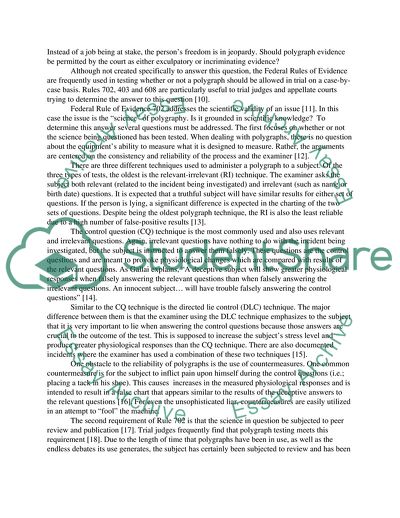Cite this document
(Should Polygraph Tests be Admissible at Trial as Valid Scientific Literature review, n.d.)
Should Polygraph Tests be Admissible at Trial as Valid Scientific Literature review. Retrieved from https://studentshare.org/law/1703762-should-polygraph-tests-be-admissible-at-trial-as-valid-scientific-evidence
Should Polygraph Tests be Admissible at Trial as Valid Scientific Literature review. Retrieved from https://studentshare.org/law/1703762-should-polygraph-tests-be-admissible-at-trial-as-valid-scientific-evidence
(Should Polygraph Tests Be Admissible at Trial As Valid Scientific Literature Review)
Should Polygraph Tests Be Admissible at Trial As Valid Scientific Literature Review. https://studentshare.org/law/1703762-should-polygraph-tests-be-admissible-at-trial-as-valid-scientific-evidence.
Should Polygraph Tests Be Admissible at Trial As Valid Scientific Literature Review. https://studentshare.org/law/1703762-should-polygraph-tests-be-admissible-at-trial-as-valid-scientific-evidence.
“Should Polygraph Tests Be Admissible at Trial As Valid Scientific Literature Review”. https://studentshare.org/law/1703762-should-polygraph-tests-be-admissible-at-trial-as-valid-scientific-evidence.


